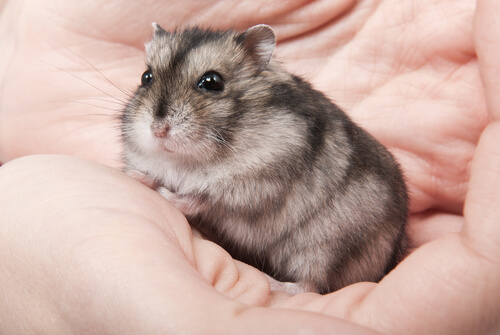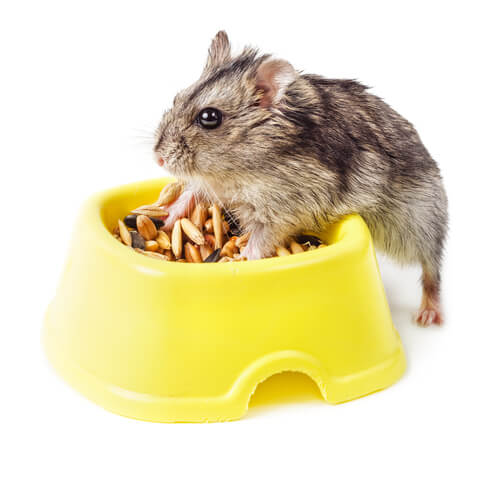How to Care for the Russian Dwarf Hamster

These aren’t very common and we don’t know too much about them. Although hamsters have always been part of our lives, and we’re sure that many of you have had one as a pet, the Russian dwarf hamster is different and not very well known. So today we want to talk about their care.
How to care for a Russian hamster
Let’s see everything we need to consider to adopt a Russian hamster as a pet:
Cage
You know that hamsters aren’t usually suitable to be left all day around the house, because they get into all sorts of nooks and crannies and we’d be spending all day looking for them while they gnaw everything. Now, that doesn’t that we can’t spend time with them or let them run free in certain areas of the house, however most of their time should be spent in a cage.
Therefore, it’s essential that you choose a cage for them. The bigger it is, the more space it will have to move around. In addition, you’ll also have to take care of the place where you put it. It should be ventilated, with plenty of natural light, but no direct sun.
Maintain hygiene
Your Russian dwarf hamster will be a very clean animal and, as such, will want its cage, as well as the places where it eats and drinks, to be kept clean. You can also put a sort of pool inside the cage so that it can bathe and keep itself clean.
When you clean its cage don’t do it with strong products, but with products that disinfect. In pet stores and department stores you’ll have many options to choose from.

Substrate
The hamster will do their “business” in their cage, and so it’s best to put in a base of sawdust that you’ll have to change at least once a week. This should never be cedar, as it emits a smell that can be harmful to your hamster’s health. Neither is pine is recommended, so it’s best to ask for advice at your favorite pet store, so that they can offer you the best option available.
Although the evidence is limited, it seems that the substrates of the above trees emanate phenols, which are toxic compounds that irritate the respiratory tract of the animal. Therefore, the use of litter trays made from recycled plant matter, corn and even hay is much more recommended. These alternatives are much more natural and environmentally friendly.
Take it out every day
If you want to have a loving and friendly Russian dwarf hamster, and above all, one that doesn’t bite, it needs to socialize.
The best way to do this is to take it out of the cage every day, so it can spend time with you and with other members of the house.
They’re very sociable animals that have to feel integrated into a group – they need to feel loved! If you do it at night, which is when it’ll be more awake, it’ll be the ideal time.
Do not bother him
This type of hamster is very sleepy, and not only does it by necessity, but by taste. So, if you see it sleeping, don’t bother it, because that will only sour its character. If there are children at home, make sure they are aware of this too, as they could reach into the cage and get bitten.
The food
Although it’s true that the Russian hamster can eat fruit and vegetables, their diet should be based on specialized feed for them. Just look in the shops and ask for advice on what would be best for your pet.

If you decide to supplement their diet with vegetables and fruits, these should be raw, it isn’t necessary or recommended that you cook them.
Buy them a toy
Like all animals, the Russian dwarf hamster also has instincts that they need to satisfy and one of them is gnawing. Give them a toy to do this, because this will also help to control the growth of their teeth, something that never stops throughout their life.
These are the most basic tips you should keep in mind if you decide to adopt a Russian hamster. You can see that, even though it isn’t a very common pet, their care doesn’t differ too much from many others. This animal will be ideal for the whole family.